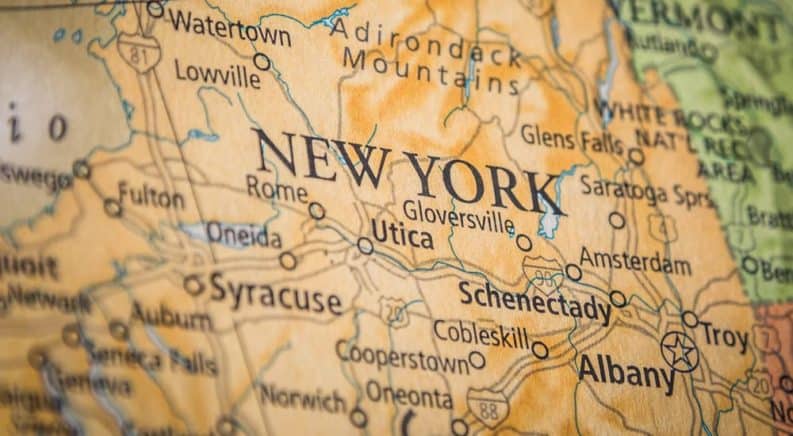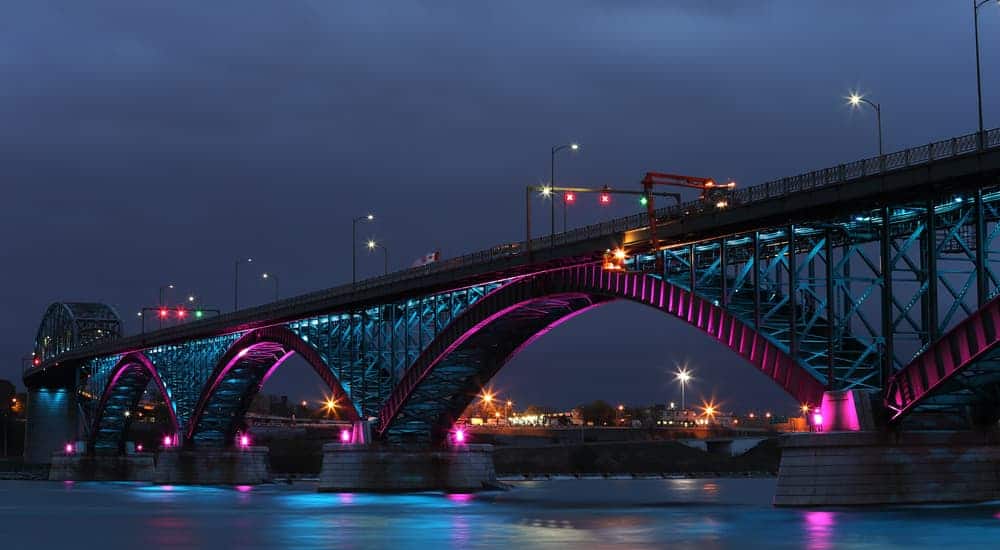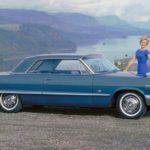It’s easy to imagine that Upstate New York has a full and rich history. With towns and cities from Albany to Buffalo founded in the 1700s, this area is teeming with history, particularly focused on the journey of how newly fledged Americans developed transportation westward and northward to expand this nation. In fact, if you were to draw a horizontal line across the middle of the state, you’d happen upon some of the most significant shrines to American transportation in the country. We’re not talking about a Chevy dealership or Ford dealership either. This part of the country features some fascinating natural wonders which inspired early settlers to roam, and as they did so, they created the roadways, bridges, waterways, and vehicles to make the voyage easier. Today, a significant number of memorials, museums, and historic sites celebrate the significant role New York has played in the transportation milestones of this country.
For those planning on loading up the Chevy Blazer, Subaru Impreza, or Ford Explorer to take a jaunt around the sometimes unruly territory of Upstate New York, there are some serious stops every automobile aficionado should hit along the trail. We’ll start on the east side of the state, in Clifton Park, NY, and head west. Along the way, we’ll discover how Americans made it from Point A to Point B at various stages in history, with a particular interest in how the automobile made it all possible.
Starting the Voyage
Clifton Park may seem an odd location to start a car trip, but there’s a reason for this: this small community was settled in the very early 1700s, and its proximity to the Mohawk River––a tributary of the Hudson River––made it a popular stop for travelers and explorers heading north and west.
As a result, this community is the doorway to the rest of our journey. In fact, a section of the New York State Canal System can be viewed here. This system combined the Erie Canal, the Oswego Canal, the Cayuga-Seneca Canal, and the Champlain Canal to help travelers and goods move across the state, allowing areas further from the cities to flourish.
One monument to this movement is Grooms Tavern. Once a grocery in Clifton Park, it became a tavern in 1828, with an attached wagon maker’s shop and blacksmith shop, providing continued transportation for those moving through by horse and wagon, as well as bolstering the local economy by supporting local farmers and their equipment.
Some travelers through this part of the country were making the pilgrimage to Saratoga Springs, and the Spa area of Upstate New York. Just outside of Clifton Park, in Ballston Spa, NY, is Brookside Museum, formerly known as Aldridge House. This inn was built in 1792, and hosted many guests who were enjoying the restorative powers of the spring water. It’s even rumored that James Fenimore Cooper penned a portion of “The Last of the Mohicans” here.
Due to the influx of tourists, it’s no surprise that Saratoga Springs is the first major stop on this journey through transportation history. Within the 2,500 acre Saratoga Spa State Park is the Saratoga Automobile Museum. Every car fan should take the opportunity to check out this carefully curated collection of automobiles and artifacts that reflect moments throughout the history of the automotive industry, encompassing a variety of niches. In fact, the Saratoga Automobile Museum is home to the New York State Stock Car Association.
The NYSSCA was incorporated in 1969 and continues education in the area of Stock Car racing throughout the state. Another key exhibit at the museum is that it highlights endurance racing. The sport of racing automobiles dates back to the state’s first race in 1903 on the Syracuse Mile, and the state quickly became a start or finishing point for cross-country car races, which were hugely popular in the early 1900s.
Those who wish to dive further into early 1900s transportation can check out the Saratoga Springs Visitor Center, as well, known as “The Drinkhall.” This architecturally fascinating structure was built in 1915 as a trolley station. The Beaux-Arts decor remains today as a testament to the historical significance of the trolley as a means of local transportation before cars became nationally prevalent.
Heading West
From Saratoga Springs, we’ll head South and West a bit to Norwich, NY. This is the home to the Northeast Classic Car Museum, a facility that is dedicated to memorializing the development of transportation, with a particular focus on the automobile. Vehicles spanning the years from 1899 to the 1980s give visitors an insight into how we’ve gotten from here to there. Also highlighted at the Northeast Classic Car Museum is founder George Staley’s personal collection of New York manufactured Franklins, along with cars that pay tribute to manufacturers across the state and throughout time, including the Playboy, Mora, O-we-go, Pierce-Arrow, and the Chenango Camper.
Next up is a trip to the New York Museum of Transportation, located in Rush, NY, a suburb of Rochester. The New York Museum of Transportation was created in the 1970s, and since then, has become home to a bevy of artifacts that highlight and educate visitors about the development of all types of movement in Upstate New York. While the focus of this collection began with a private collection of local trolley cars, this New York State charter educational institution highlights all forms of travel, including the Rochester Subway, the steam locomotive, and the service cars that have kept the state running, such as historical fire trucks and ambulances.
Arrival in Buffalo
Just over an hour to the west from the New York Museum of Transportation, you’ll find the Buffalo Transportation Pierce-Arrow Museum. What began as the private collection started to satisfy James T. Sandoro, Jr’s early obsession with Pierce-Arrow vehicles, has bloomed into a celebration of the history of transportation in western New York. Not only does Mr. Sandoro’s collection focus on his interest in the locally-produced Pierce-Arrow vehicles, but it includes all sorts of memorabilia related to transportation and the City of Buffalo. Exhibits include early Pierce-Arrow bicycles, a 1902 Buffalo Electric Stanhope electric carriage (the predecessor to today’s hybrid cars), and the 1919 Intercity Coach- one of the first passenger buses manufactured in America.
Another fascinating exhibit at this museum is the installation celebrating a filling station designed in 1927 by famed architect Frank Lloyd Wright. Though Wright’s copper-accented Buffalo Filling Station featured a second-story observatory, a gravity-based fueling system, and living quarters for the attendant, the station was never built. In 2002, Mr. Sandoro and architect Patrick Mahoney secured the rights to build from these plans, and in 2014, the Buffalo Filling Station received the 2014 Copper in Architecture Award from the Copper Development Association, Inc.
If you were headed directly across Upstate New York, from Clifton Park to Buffalo in your SUV filled with other car buffs and a selection of local snacks, the trip would take around four and a half hours. After checking out the canals that brought settlers upstate and into Canada, the wagon makers and blacksmiths who kept the horses running, the railroads that built the country, and the trolleys and automobiles that dutifully kept early New Yorkers in touch with their local friends, you might feel that four hours is practically light speed. Not only will you gain an appreciation for your climate-controlled, all-wheel drive vehicle, but you’ll probably feel a little more thankful for GPS, Yelp, and other tools that help keep drivers on the road today.
By looking into the history of transportation in Upstate New York, you’ll see the country develop in front of your eyes, not only recognizing trends in cars and trucks, but in how humans interacted with the territory and learned to survive and thrive beyond the busy city streets. You’ll have a greater appreciation for the models you purchase at your local Ford or Chevy dealership after looking at the history of American transportation in New York. Transportation, after all, is how we got here in the first place!





